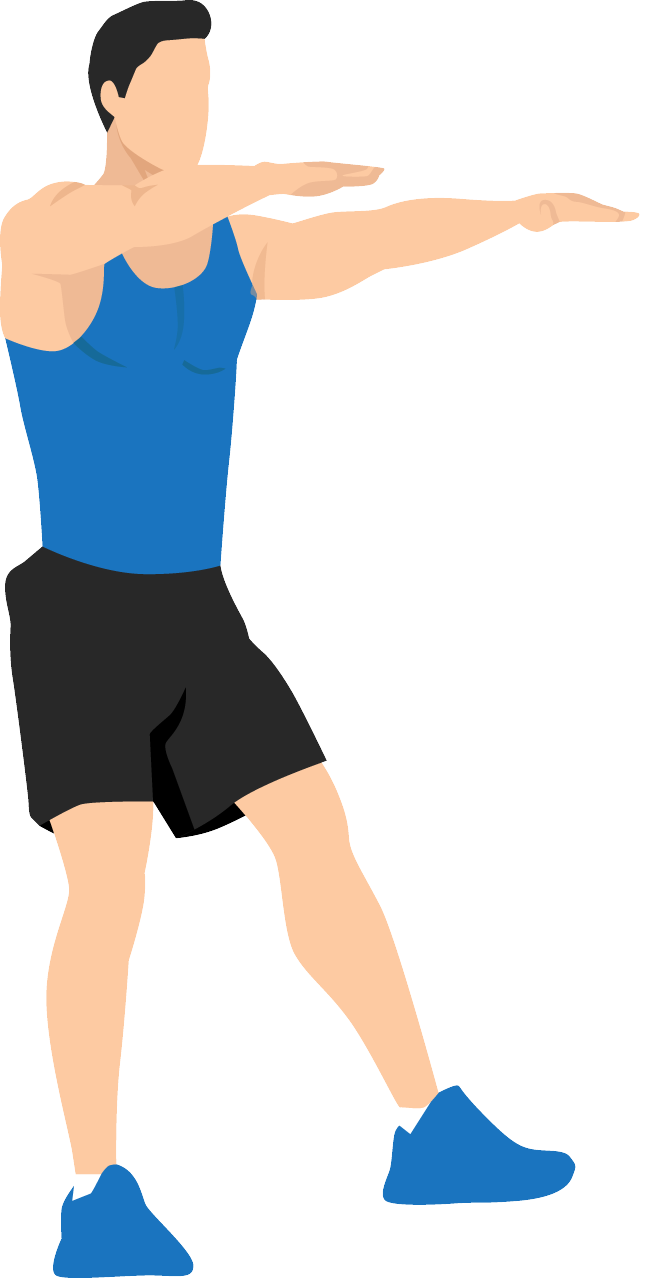
Working as a team, our experts at Flagstaff Bone & Joint provide exceptional orthopaedic care. Compiling their expertise, our doctors are a premier source for bone, joint, and muscle care in pickleball.
Serving Flagstaff, Kingman, Cottonwood, and the surrounding areas since 1978, our doctors remain committed to delivering expert care to help keep the entire community healthy and active. When it comes to the expanding world of pickleball, we are proud to provide high-quality bone, joint, and muscle care to help keep athletes on the court.
Pickleball, like any sport, offers a mix of health benefits and injury risks that call for a proactive approach to wellness. Should an injury occur, quick and efficient recovery requires the expertise of seasoned professionals who can tailor treatments to your specific needs.
At Flagstaff Bone & Joint, our team of doctors is proficient in diagnosing and treating pickleball-related injuries. Delivering personalized care and rehabilitation plans, our doctors relieve pain and reduce the limitations of injuries, helping you find your way back to the court in a safe and timely manner.
Our pickleball injury experts at Flagstaff Bone & Joint are proud to be Pickleball Doctors. Offering expert suggestions for injury prevention, performance, and more, Pickleball Doctors is a group of elite doctors dedicated to helping dominate the pickleball court.
Prepare for Pickleball Play & Avoid Injury
Experiencing success in pickleball depends on valuing both wellness and safety. At any skill level, you can reduce on-court injury risks by preparing off-court using the right methods and enough dedication.
Participating in activities like strength training, conditioning, and focused stretching has a vital role in preparing pickleball enthusiasts for their time on the court. For those looking for peak protection and performance, our customized program is here to assist.
Pickleball 10 to Win
Elevate your court performance and endurance with these 10 targeted exercises that improve flexibility, agility, strength, and stamina.
Exercise 1
BEAR HUGS
Step 1. Stand straight or lie on your back and open up your arms, pulling your shoulders back to broaden your chest.
Step 2. Bring your arms back in, wrapping them around your chest, and pat the back of your shoulders.
Step 3. Repeat quickly 20 times.

For the Win: Do some resistance bear hugs. Hold a resistance band around your back. Then, reach your arms out in front of you like you are hugging someone. Hold for 3 seconds. Repeat 10 times.
Exercise 2
POGO HOPS
Step 1. Stand with your feet shoulder-width apart.
Step 2. Bend your knees slightly, but keep your posture straight.
Step 3. Keep your feet together and jump up and down in place.
Step 4. Repeat for 30 seconds.

For the Win: Do some single-leg hops. Balance on one leg and hop in place for 30 seconds. Repeat while balancing on your other leg. For better agility training, use a line to hop over from left to right.
Exercise 3
SIDE-LYING LEG LIFTS
Step 1. Lie on your side with your legs straight and one leg on top of the other.
Step 2. Bend your knees slightly and move your top leg toward the sky or ceiling.
Step 3. Lift your leg slowly and lower it slowly.
Step 4. Repeat 10 times on each side.

For the Win: Try resistance leg lifts! While lying on your side, place a resistance band around your legs and above your knees while you complete your leg lifts. For more of a challenge, place the band around your ankles.
Exercise 4
SINGLE-LEG BALANCE
Step 1. Stand with your feet hip-width apart.
Step 2. Lift one foot off the ground. If you need, hold your arms out to help you balance.
Step 3. Hold this position for up to a minute or as long as you can.
Step 4. Repeat on each side.

For the Win: Do single-leg extensions. Stand on one foot. Lift your other leg, extending it behind you, in front of you, and off to the side. Center your leg before each extension. Repeat 15 times on each side.
Exercise 5
STANDING QUAD STRETCH
Step 1. Stand on one foot and pull the other behind you, holding the ankle.
Step 2. If you need, hold onto something for balance.
Step 3. Pull your heel toward your buttocks, and hold for 30 seconds.
Step 4. Repeat for 3 sets on each side.

For the Win: Do kneeling quad stretches. Kneel on one knee with the opposite foot planted flat in front of you. Push your hips forward and hold for 30 seconds. Repeat for 3 sets on each side.
Exercise 6
ROWS
Step 1. Put a resistance band around a stable surface, like a tree or fence, holding the band in each hand.
Step 2. Stand facing the band with your feet hip-width apart.
Step 3. Pull the band toward you, squeezing your shoulder blades.
Step 4. Return to your starting position.
Step 5. Repeat 15 times.

For the Win: Do some bodyweight rows. Instead of resistance bands, use your body weight. Find a stable horizontal surface, such as a table or bar, and lie underneath it, grasping the surface firmly with both hands. Pull yourself up then lower yourself back down. Repeat 15 times.
Exercise 7
PLANKS
Step 1. Put your hands and knees on the ground, then extend your legs behind you.
Step 2. Support your weight on your forearms and toes.
Step 3. Keep your body straight from your head to your heels.
Step 4. Hold this position as long as you can.

For the Win: Try side planks with resistance in your arms. Support your weight on one foot and forearm. Hold a resistance band in both hands, and extend your free arm toward the sky or ceiling. Repeat 10 times on each side.
Exercise 8
HEEL RAISES
Step 1. Stand with your feet shoulder-width apart.
Step 2. Slowly lift your heels off the ground, rising up onto the balls of your feet.
Step 3. Pause as you get to your tip-toe position, then lower your heels slowly back down to the ground.
Step 4. Repeat 20 times.

For the Win: Try single-leg heel raises. Instead of using both feet, lift one foot off the ground while putting your weight on the other foot and lifting that heel up. Repeat 20 times on each side.
Exercise 9
SQUATS
Step 1. Stand with your feet shoulder-width apart.
Step 2. Lower your hips down and back as if you are sitting down in a chair.
Step 3. Keep your weight on your heels.
Step 4. Return to a standing position.
Step 5. Repeat 10 times.

For the Win: Try single-leg squats. Instead of two feet down as you squat, lift one foot off the ground and extend it in front of you as you lower your hips and return to a standing position. Repeat 10 times on each side.
Exercise 10
LUNGES
Step 1. Stand with feet hip-width apart.
Step 2. Take a big step forward with one foot.
Step 3. Lower your hips down until your front knee is bent at a 90-degree angle.
Step 4. Keep your weight on your front heel.
Step 5. Push off your front foot to return to a standing position.
Step 6. Repeat 10 times on each side.

For the Win: Do backward and side lunges. For backward lunges, take a big step backward, lower, and push off your back foot to return to standing. For side lunges, take a step out to the side, lower yourself on that side, and push back up from that foot to return to standing.
When to See an Expert
If you're injured or experiencing pain, it's essential to avoid playing pickleball—or any sport. Even seemingly minor injuries can exacerbate existing issues, potentially delaying or interrupting your recovery. Seeking timely consultation with an orthopaedic doctor is crucial to prevent possible complications.
Effective injury management requires accurate evaluation and prompt intervention from an experienced expert. To get the care you need, schedule an appointment online or call (928) 773-2280 to consult with one of our orthopaedic sports medicine doctors if you experience any of the following:
- Pain and tenderness in the affected area
- Swelling and bruising
- Limited range of motion or stiffness
- Weakness or instability in the joint or surrounding muscles
- Numbness or tingling sensation
- Pain exacerbated by certain movements or activities

Since pickleball is so dynamic, injuries vary widely, but the most common include:
- Golfer’s elbow
- Herniated or slipped discs
- Muscle strains
- Plantar fasciitis
- Rotator cuff tears and other shoulder injuries
- Tennis elbow, also called pickleball elbow
- Torn ligaments (ACL and MCL)
- Wrist and ankle sprains
Recover & Thrive on the Court: Expert Pickleball Care at Flagstaff Bone & Joint
Want to enhance your pickleball performance while minimizing the risk of injury? At Flagstaff Bone & Joint, our team of pickleball experts is here to support your game. We understand the specific challenges of the sport and offer tailored treatment plans designed to get you back on the court in top shape.
Our priority is helping you reach your full potential using nonsurgical treatments whenever possible. Should surgery be required, our experienced doctors use advanced minimally invasive techniques to ensure a quicker and safer recovery.
Pickleball-Related Injuries & Care
Our team of experienced doctors is dedicated to treating a wide range of pickleball injuries and conditions. Whether you're dealing with sprains or tendon injuries, we provide comprehensive treatment options to support your recovery. While many pickleball injuries can heal with rest and home care, some require professional evaluation to determine the most effective treatment plan. To learn more about these injuries, please use the links provided.
HURT TODAY? TREATED TODAY.
Same-Day Appointments & Walk-Ins
If you’re injured on or off the pickleball court, your injuries need prompt treatment. At Flagstaff Bone & Joint, we understand injuries happen when least expected. We are proud to provide accessible, efficient, and comprehensive orthopaedic care for your urgent needs whether you walk in, call, text, or schedule online.







